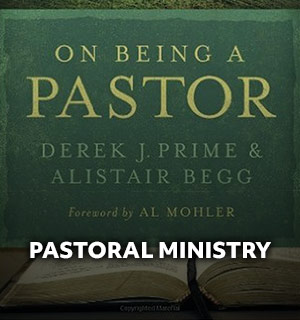
By Daniel Darling
Leaders aren’t just strategic thinkers and thought leaders; they’re also communicators. Whether you signed up to be a communicator or not, you are one by virtue of your position.
The way you convey new ideas to your team can make or break a campaign or initiative. In a church setting, this is even more vital as you are usually leading a mix of paid staff, volunteers, and the larger congregation, all of whom live busy, distracted lives.
Here are five make-or-break communication tactics for your church or ministry.
1. Seek input from key stakeholders.
Nobody enjoys top-down mandates that take people by surprise. This is especially true when your decisions affect other people’s teams and their workload.
In a church, it affects your members’ schedules, routines, and way of life. Making decisions without seeking input and demanding people follow them may make you feel empowered, but it will erode your leadership capital over time.
It’ll also burn out your staff.
You don’t need a committee for every decision; at times you’ll have to make decisions without much input. But overall, engaging key influencers and stakeholders in your church to help advise and round out major changes is important.
Over time, people will be less inclined to want to cooperate, will feel less empowered and therefore will take less ownership of what you want to accomplish through them.
2. Be simple and clear.
I can’t stress clarity enough. Most of us live layered, complicated, busy lives. As much as you can, communicate change in ways that are easy to understand.
This is sometimes difficult for leaders, because we’ve been in the weeds of the project or situation and we’re the most fluent in what we are trying to achieve. But you need to assume you’re explaining this new change or new idea to someone in a minute or less.
Confusing words, terminology that can be misunderstood, and graphics that are hard to read can undermine your leadership. Before you bring a concept before your leadership team: Ask yourself questions. Test it with someone who his totally out of the loop and get their reaction. Get out of your bubble and echo chamber of those who might reflexively be “yes” people.
3. Give multiple ways to engage—but a single call to action.
This is especially important if you’re trying to mobilize people for action.
Let’s say your church is about to do a big drive to have your members invite people to church. It’s helpful to have multiple resources teaching and training people on how to best do this, from a biblical and theological standpoint and with teaching tools that make this more natural.
But you should only have one, easy-to-remember call to action. Assume everyone, after they hear your pitch will ask themselves, “Ok, what do you want me to do?”
4. Anticipate questions.
You can’t game-plan every single objection or question folks might have, to be sure, but you should try to think ahead about ways that what you are doing could be misunderstood or not understood at all.
This is especially important if you’re making a major change in your church or organization, or if there’s a crisis your leadership team is having to address. This might mean bringing multiple people in from different social strata and levels of engagement to get input on what’s missing.
One caveat here: You can overanalyze and never launch. “Paralysis by analysis” has stalled many good ideas. Nevertheless, do your homework and anticipate all the possible questions people might have.
5. Over-communicate.
As a leader, you’ve likely had someone come up to you and say, “Why didn’t anyone tell me about _____ ?”
Few conversations are more frustrating. In your mind you’ve been talking about this new campaign for weeks on end and yet, this person didn’t seem to hear.
But it illustrates a principle of leadership that cannot be emphasized too much: Leaders need to over-communicate. For a new idea or big change, plan on a long enough timeline to saturate your leadership team, volunteers, and congregation with information. The worst kind of leadership is the one that announces a new thing the week before it starts.
People don’t generally respond well to sudden lurching and it creates the impression that leadership is unstable. Sometimes you can’t help this and things surface that are out of your control and require a quick change. But keep these to an absolutely minimum if you want to lead effectively.
And you must communicate broadly as well as repetitively. Use every possible medium people might engage. It’s not enough to say, “We mentioned in the announcements.” You need to announce it from the stage, put it in the bulletin, send out an email, post on your screen, announce it multiple times via social and via email newsletters, and every other conceivable way short of carrier pigeons.
Why? Because people absorb news in different ways. Some of your folks are faithful bulletin readers who consume it cover to cover. Others use their bulletin as a bookmark or doodle pad and ever read the announcements. Some folks come in early and see announcements on the screen.
Others fellowship in the lobby and miss half of the opening music set. And then there are those who read emails and those who don’t.
You need to communicate in as many mediums and as many times as is necessary. In fact, if you aren’t exhausted by mentioning your new campaign or new change because you keep talking about it and seeing it on all of your communication platforms, you haven’t mentioned it enough times.
People are busy and you need to hit them wherever they might possibly see it.
As leaders, we have been tasked with stewarding our resources, time, and positions for the glory of God. We’ve also been tasked for caring well for those we lead. And having thoughtful, consistent, strategic communications in our ministry is a great way to accomplish both.
DANIEL DARLING (@dandarling) is vice president of communications for the Ethics and Religious Liberty Commission and teaching and discipleship pastor at Green Hill Church in Mt. Juliet, Tennessee. He is the author of several books, including The Dignity Revolution.








